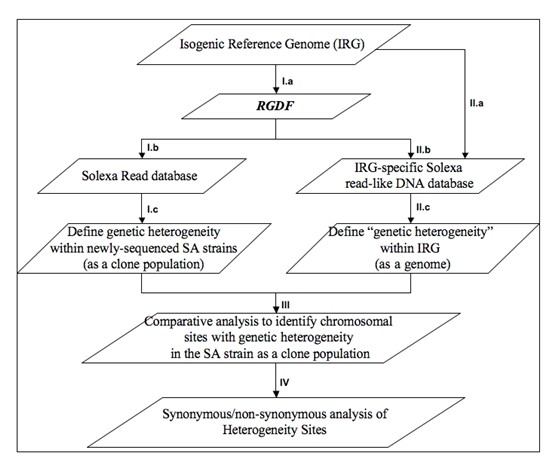Figure 1.

The four-step analysis procedure for heterogeneity analysis of bacterial population. The first step is to establish genome-wide heterogeneity phenotypes for the newly sequenced bacterial strain (a clone population) (I.). The step first creates a database of Reference Genome DNA Fragments (RGDF) with a set of non-overlapped DNA fragments from the isogenic reference genome (IRG) (I.a); Once established, RGDF is used to search the database of Solexa short reads of the bacterial strain via MegaBlast to identify its candidate trace sequences (I.b), which are then mapped to the IRG to define genetic heterogeneity (I.c). The second step is a simulation procedure to study the genome complexity of the IRG (II.). The procedure creates an IRG-specific DNA database, covering all possible N-base pair "Solexa read-like" DNA fragments from the IRG (II.a), Then the analysis follow the same procedure from I.b to I.c to identify candidate sequences from the IRG-specific DNA database (II.b) and to establish genome-wide "heterogeneity" genotypes (II.c). The genotypes from step I and II are comparatively analyzed (III.). The genetic heterogeneity sites were analyzed with genewisedb for synonymous/non-synonymous mutations (IV).
